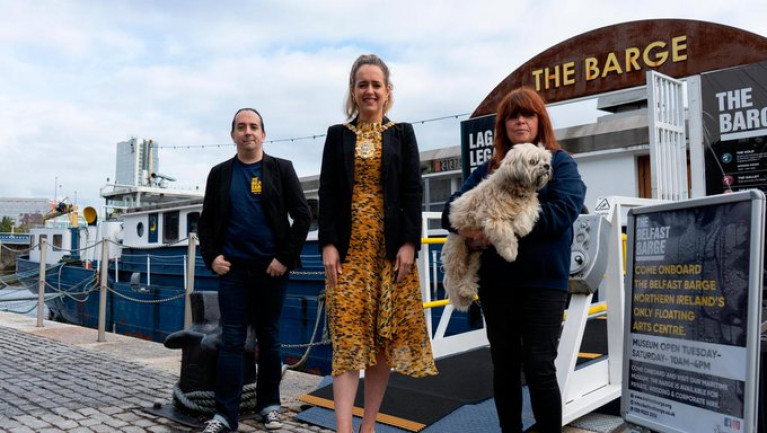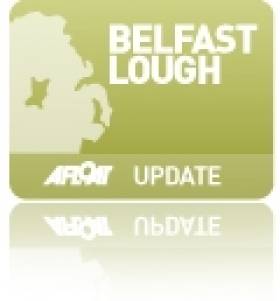Displaying items by tag: Lagan Legacy
Iconic Belfast Barge Relaunched as Floating Arts & Events Venue Space
The iconic Belfast barge which spent years as a restaurant has been relaunched as Northern Ireland’s only floating arts centre and events space.
The vessel (Confiance) is moored at Lanyon Quay (River Lagan), has been converted into an arts hub with a maritime museum, gallery and bookable events space.
The news was announced today by charity Lagan legacy.
The upstairs river room was once home to a restaurant but has now been converted into a family and dog friendly café, which will open to customers next Tuesday (November 2).
The barge was a popular restaurant but has gone largely under the radar for the past 18 months during the Covid-19 pandemic.
Attending the launch of the new project, Belfast’s Lord Mayor, Kate Nicholl said it was fantastic to see the much-loved barge back in action.
“The barge is over-flowing with history and is a fantastic space for artists, musicians and creators to come together,” she said.
Belfast Telegraph has more.
Belfast Barge is Lagan Legacy to City’s Maritime and Industrial Past
#BelfastBarge – Dublin Docklands has the M.V. Cill Airne, the floating restaurant and bar venue however are you aware of The Belfast Barge and its maritime museum, writes Jehan Ashmore.
The Lagan Legacy's Barge bears a precious cargo with the extraordinary story of Belfast's epic maritime and industrial past. This is told in a maritime exhibition called 'The Greatest Story Never Told.'
As for the barge itself, she cannot claim to be Belfast-built as the former Dutch cargo-barge M.V. Confiance was purchased and renamed in 2006 by Lagan Legacy.
Work to fully renovate the barge has also provided the floating venue to become a cultural hub on the river lagan, regenerating the area and encouraging citizenship as well as economic development.
The Barge also houses a café and multi-use performance space is permanently moored adjacent to Lanyon Place, which is located to the rear of Belfast's Waterfront Hall.
As for the cultural component, the barge performance space is Belfast's only floating theatre where a variety of events among them film screenings, album launches and comedy evenings are held. In addition the venue is available for event hire and family education programmes.
























